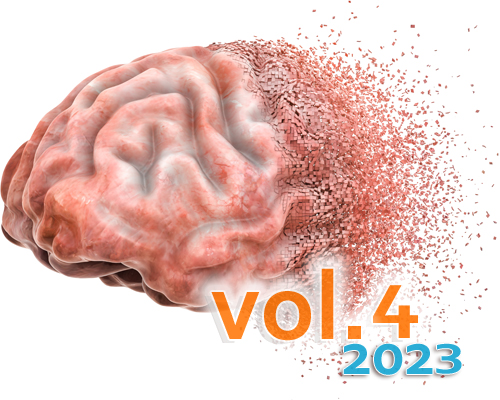Reference on copy number variations in pleomorphic xanthoastrocytoma: Implications for diagnostic approach
DOI:
https://doi.org/10.17879/freeneuropathology-2023-5156Keywords:
Pleomorphic Xanthoastrocytoma, PXA, Copy Number Variations, CNV, Methylation, Classification, 7/10 signature, EGFR, CDKN2A/B, Amplification, Homozygous deletionAbstract
Pleomorphic xanthoastrocytoma (PXA) poses a diagnostic challenge. The present study relies on methylation-based predictions and focuses on copy number variations (CNV) in PXA. We identified 551 tumors from patients having received the histologic diagnosis or differential diagnosis pleomorphic xanthoastrocytoma (PXA) uploaded to the web page www.molecularneuropathology.org. Of these 551 tumors, 165 received the prediction “methylation class (anaplastic) pleomorphic xanthoastrocytoma” with a calibrated score >=0.9 by the brain tumor classifier version v12.8 and, therefore, were defined the PXA reference set designated mcPXAref. In addition to these 165 mcPXAref, 767 other tumors received the prediction mcPXA with a calibrated score >=0.9 but without a histological PXA diagnosis. The total number of individual tumors predicted by histology and/or by methylome based classification as PXA, mcPXA or both was 1318, and these were designated the study cohort. The selection of a control cohort was guided by methylation-based predictions recurrently observed for the other 386/551 tumors diagnosed as histologic PXA. 131/386 received predictions for another entity besides PXA with a score >=0.9. Control tumors corresponding to the 11 most common other predictions were selected, adding up to 1100 reference cases. CNV profiles were calculated from all methylation datasets of the study and control cohorts. Special attention was given to the 7/10 signature, gene amplifications and homozygous deletion of CDKN2A/B. Comparison of CNV in the subsets of the study cohort and the control cohort were used to establish relations independent of histological diagnoses. Tumors in mcPXA were highly homogenous in regard to CNV alterations, irrespective of the histological diagnoses. The 7/10 signature commonly present in glioblastoma, IDH-wildtype, was present in 15-20% of mcPXA, whereas amplification of oncogenes (likewise common in glioblastoma) was very rare in mcPXA (<1%). In contrast, the histology-based PXA group exhibited high variance in regard to methylation classes as well as to CNVs. Our data add to the notion, that histologically defined PXA likely only represent a subset of the biological disease.
Metrics
Additional Files
Published
How to Cite
Issue
Section
License
Copyright (c) 2023 David E. Reuss, Daniel Schrimpf, Damian Stichel, Azadeh Ebrahimi, Chris Dampier, Kenneth Aldape, Matija Snuderl, David Capper, Martin Sill, David T.W. Jones, Stefan M. Pfister, Sahm Felix, Andreas von Deimling

This work is licensed under a Creative Commons Attribution 4.0 International License.
Papers are published open access under the Creative Commons BY 4.0 license. This license lets others distribute, remix, adapt, and build upon your work, even commercially, as long as they credit you for the original creation. Data included in the article are made available under the CC0 1.0 Public Domain Dedication waiver, unless otherwise stated, meaning that all copyrights are waived.



















